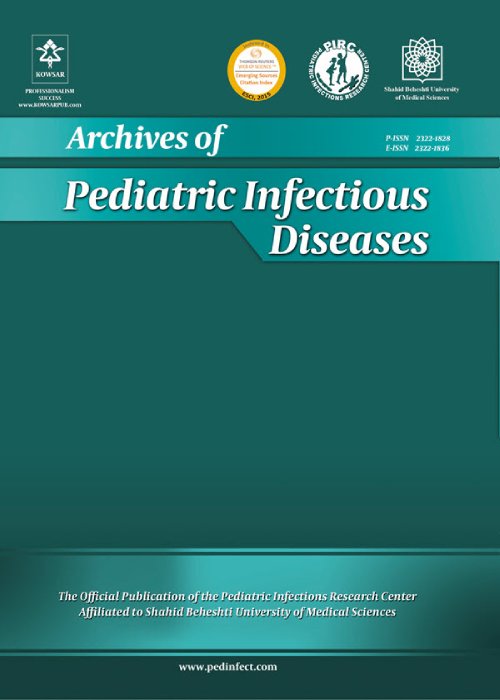Genetic Variability and Integron Occurrence in Methicillin Resistant Staphylococcus aureus Strains Recovered from Patients with Urinary Tract Infection
Author(s):
Article Type:
Research/Original Article (دارای رتبه معتبر)
Abstract:
Background
Treatment for infections caused by Methicillin-Resistant Staphylococcus aureus (S. aureus) is one of the main concerns of public health.
Objectives
The aim of this study was to investigate the prevalence of toxin, enterotoxin, and resistant encoding genes and analyze the distribution of different SCCmec types. The prevalence of integron was also determined in S. aureus isolates obtained from patients with urinary tract infections (UTIs).
Methods
In the present study, 126 MRSA isolates obtained from patients with UTI were examined for susceptibility to antimicrobial agents. Genes encoding integrase, resistance, toxin, and SEs were detected by the polymerase chain reaction (PCR) screening. The SCCmec types were determined using the multiplex PCR. Integrase positive strains were evaluated for determination of integron classes using PCR-restriction fragment length polymorphism assay.
Results
From 126 MRSA isolates studied, 107 isolates (84.9%) were multi-drug resistant. The most prevalent genes in isolates under study was aac (6΄)-Ie/aph (2˝) (50%) followed by tet (M) (47.6%), msr (A) (38.1%), aph (3΄)-IIIa (25.4%), erm (A) (23%), ant (4΄)-Ia (16.7%), erm (B) (14.3%), msr (B) (9.5%), and erm (C) (7.1%). Staphylococcal enterotoxins sea, sec, see, sed, seg, seb, and sei were detected in 27%, 20.6%, 16.7%, 14.3%, 11.1%, 7.1%, and 5.6% of the isolates, respectively. The results revealed that 126 MRSA isolates fell in the SCCmec type III (37.3%), SCCmec type I (23%), SCCmec type II (14.3%), SCCmec type IV (13.5%), and SCCmec type V (11.9%). Class 1 and 2 integrons were commonly found in 34.1% and 14.3% of the isolates, respectively. Seven isolates (5.6%) were observed to carry class 1 and 2 integrons, simultaneously.
Conclusions
The current findings showed that identification and screening of integrons and SCCmec elements as reservoirs that should be considered for various resistance genes to consume proper antibiotic and perform a systematic surveillance.Keywords:
Language:
English
Published:
Archives of Pediatric Infectious Diseases, Volume:7 Issue: 2, Apr 2019
Page:
4
magiran.com/p1967114
دانلود و مطالعه متن این مقاله با یکی از روشهای زیر امکان پذیر است:
اشتراک شخصی
با عضویت و پرداخت آنلاین حق اشتراک یکساله به مبلغ 1,390,000ريال میتوانید 70 عنوان مطلب دانلود کنید!
اشتراک سازمانی
به کتابخانه دانشگاه یا محل کار خود پیشنهاد کنید تا اشتراک سازمانی این پایگاه را برای دسترسی نامحدود همه کاربران به متن مطالب تهیه نمایند!
توجه!
- حق عضویت دریافتی صرف حمایت از نشریات عضو و نگهداری، تکمیل و توسعه مگیران میشود.
- پرداخت حق اشتراک و دانلود مقالات اجازه بازنشر آن در سایر رسانههای چاپی و دیجیتال را به کاربر نمیدهد.
In order to view content subscription is required
Personal subscription
Subscribe magiran.com for 70 € euros via PayPal and download 70 articles during a year.
Organization subscription
Please contact us to subscribe your university or library for unlimited access!


